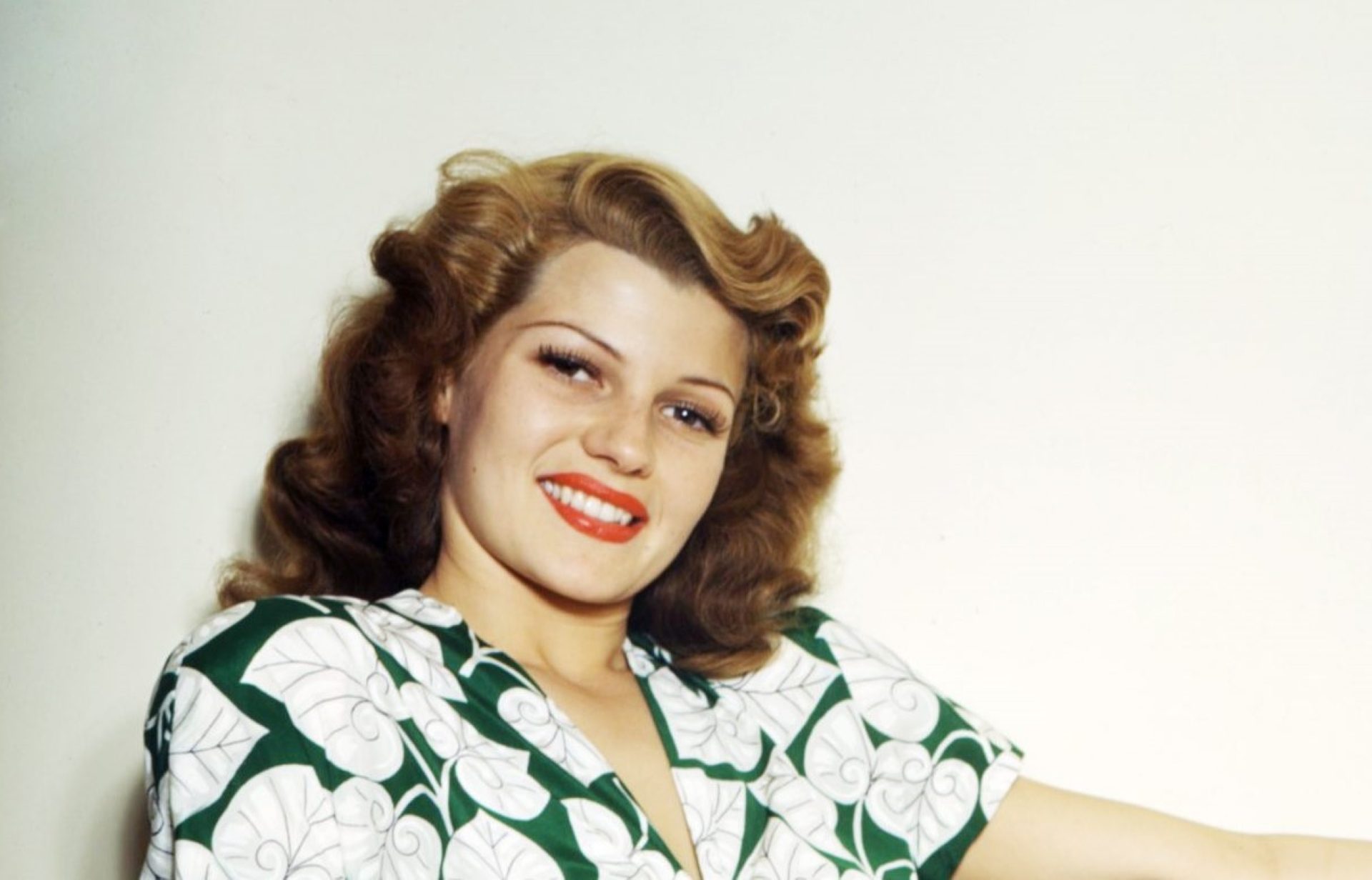Rita Hayworth's bittersweet life in photos
The media famously christened her the "Love Goddess," a title that encapsulated her image as the epitome of 1940s Hollywood glamour and allure. She was celebrated for her striking beauty and sultry on-screen persona, quickly becoming a symbol of sensuality and elegance. However, the public image carefully crafted by the press and studios was far removed from who she truly was in her private life...
Margarita was born into a showbiz family in 1918, with her father a prominent Spanish-born American dancer and her mother a popular showgirl on Broadway. She said from the time she could stand, she was in dance lessons. No friends, and little study, her life was rehearsal after rehearsal.
Photo: Jose Reyes, The American Magazine, 1942 / Wikimedia
When she was as young as 12, Hayworth was made to look older and began touring as her father’s wife around California and Mexico. According to her biography, he abused her physically and sexually at the time.
Photo: Cine Mundial, November 1935, p.684 / Wikimedia
While dancing at spots frequented by Hollywood execs, she was scouted by the Fox Film Corporation. But from the ages 16-18, she only appeared in minor roles, and her contract wasn’t renewed.
In 1937, she eloped with a businessman who was twice her age. “I married him for love, but he married me for an investment,” she later said, according to her biography. He forced her to push publicity and even encouraged her to sleep with influential men.
Photo: Photoplay, July 1942, p. 27, / Wikimedia
On the advice of studio head Harry Cohn, whom she famously refused to sleep with, and her husband, Margarita changed her name and looked to become more 'American.' She adopted her mother’s maiden name, dyed her dark hair red, and got electrolysis on her hairline because it was considered 'too ethnic.'
After her makeover, she began to appear in more films. In 1941, she starred opposite Fred Astaire in one of the highest-budget Columbia films ever. It was a smash hit, and they partnered again. Astaire later said Rita was his favorite dance partner.
In 1941, Rita posed for an iconic ‘Life’ photo, which made Hayworth one of the two main girls who got soldiers through WWII (alongside Betty Grable). For two years, her image was the most requested photo in circulation.
The mega director Orson Welles was also enchanted by her beauty, as well as her vulnerable, shy, and sweet offscreen persona. The two eventually married. Hayworth would call Welles “the great love of my life.”
The two were close to leaving Hollywood to pursue Welles’ political career. “She never got a moment’s pleasure out of being a famous movie star. It gave her nothing,” Welles said of her life. But, in the end, her dreams were dashed as Welles’ eyes drifted.
According to biographer Barbara Leaming, Welles became self-destructive, having affairs, paying for encounters with women, and eventually forming a relationship with Judy Garland.
The peak of her stardom and image as a glamorous bombshell came in the 1946 smash film noir classic ‘Gilda.’ The role included a legendary one-glove performance, which caused censors some concern, though she was proud to say she never went completely without clothes.
After ‘Gilda,’ it was reported that the US would put her face on an anatomic bomb scheduled to be tested. It was meant as a compliment, but she was furious. “Rita almost went insane, she was so angry,” said Welles. “She was so shocked by it…She wanted to go to Washington to hold a press conference, but Harry Cohn wouldn’t let her because it would be unpatriotic.”
During their marriage, and after, Hayworth had a difficult relationship with the bottle. Welles said, “she’d fly into rages, never at me… always at Harry Cohn or her father or her mother or her brother… She’d drive up the hills... Terrible, terrible nights. And I just saw this lovely girl destroying herself.”
They reconciled to film ‘The Lady From Shanghai,’ but divorced soon after. “Rita told him, ‘You know the only happiness I’ve ever had in my life has been with you.’” Welles was overwhelmed with guilt about how badly he had treated her and with sadness at the perspective this gave him on her life. “If this was happiness,” he would later say of their marriage…“imagine what the rest of her life had been,” reads the Leaming biography.
As her personal life fell to pieces, her Hollywood success continued. After appearing in a ‘Life’ cover story, she earned the nickname 'The Love Goddess.' She also co-produced the film ‘The Loves of Carmen,’ which was a huge money-maker, but she had to use the funds to pay off debts (her first husband went after her money).
In 1948, at the height of her fame, she met Prince Aly Khan, a prince, diplomat, and son of a founder of a major branch of Islam. A year later, they married in a hugely publicized ceremony. She was the first actress to become a princess, and her fans thought her Cinderella story had finally come.
Once again, however, the gorgeous actress found herself subjected to infidelities, according to the biography. She also said she was struggling to fit into his social circle in France. In 1951, she filed for divorce on the grounds of "extreme cruelty, entirely mental in nature."
Rita was pregnant when she married Prince Aly Khan. When she divorced, she reportedly turned down $1 million per year to convert their daughter Yasmin to Islam. She also had a child with Orson Welles, Rebecca.
After that divorce, she was faced with a brutal custody battle, lawsuits with Columbia, and temporarily losing her daughters to the state. During everything, she married big band singer Dick Haymes, who was nicknamed 'Mr. Evil.'
During a night out, Haymes hit her at the Cocoanut Grove and gave her a black eye. In their two-year marriage, he left her without much money. When they met, he was heavily indebted to the IRS. “I could hardly believe I could be a princess one minute and be treated like that the next,” she told actress June Allyson, according to her biography.
In 1958 she married film producer James Hill, whom she divorced two years later for extreme mental cruelty. In his autobiography, Charlton Heston recalled how Hill heaped “obscene abuse” onto Hayworth until she was “reduced to a helpless flood of tears.” Heston said he wanted to punch Hill.
In the 1960s, Rita began showing signs of dementia, although everyone around her misread the symptoms due to her alcoholism. She continued acting through part of the 1970s because she needed money, but she had trouble remembering lines. In 1976, she was removed from a flight after an angry outburst, a scene that made it to the press.
Her daughter Yasmin said the diagnosis was a huge relief after two nightmarish decades of symptoms. In fact, Rita became the first public figure to come out with a public diagnosis of the disease, which historians say helped destigmatize the condition.
By 1981, her health had deteriorated to a point that a Los Angeles court put her under the care of her daughter Yasmin. On the evening before his death in 1985, Welles called Hayworth "one of the dearest and sweetest women that ever lived."
At age 68, Rita died of complications from Alzheimer’s disease. At the time, President Reagan issued a statement: “Rita Hayworth was one of our country's most beloved stars… In her later years, Rita became known for her struggle with Alzheimer's disease. Her courage and candor, and that of her family, were a great public service in bringing worldwide attention to a disease which we all hope will soon be cured.”





































